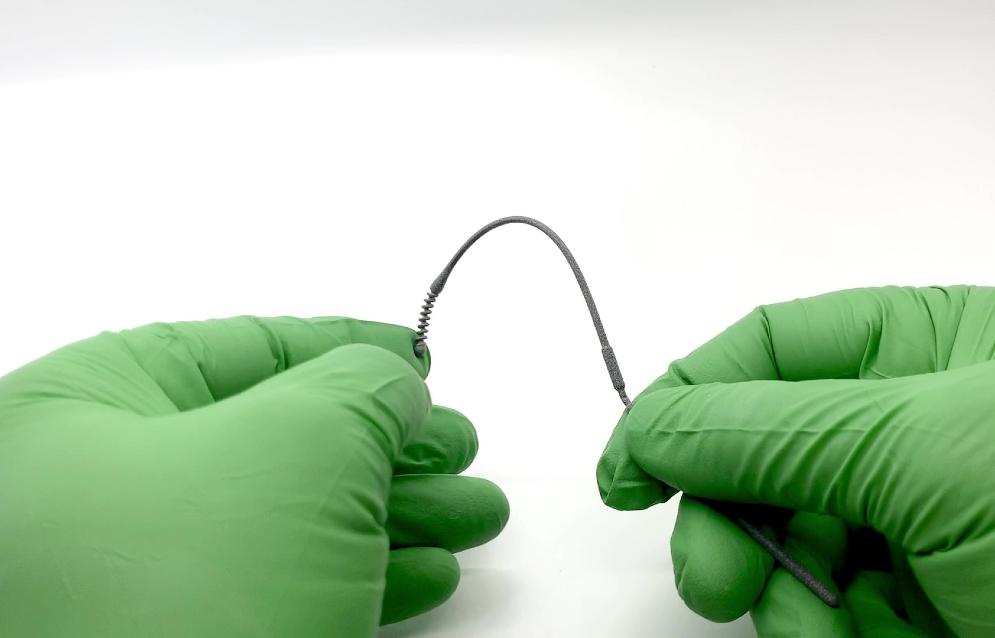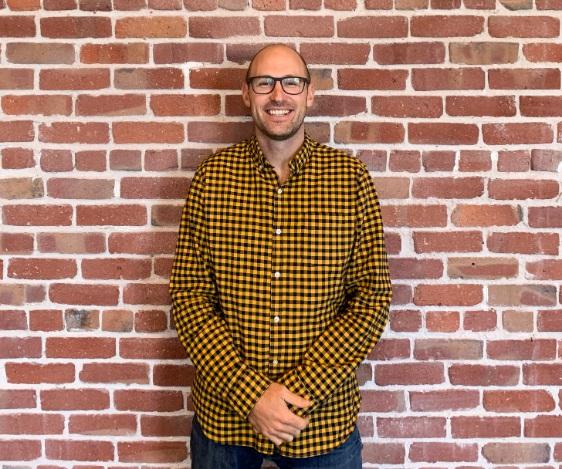- FMA
- The Fabricator
- FABTECH
- Canadian Metalworking
Our Publications
Categories
- Additive Manufacturing
- Aluminum Welding
- Arc Welding
- Assembly and Joining
- Automation and Robotics
- Bending and Forming
- Consumables
- Cutting and Weld Prep
- Electric Vehicles
- En Español
- Finishing
- Hydroforming
- Laser Cutting
- Laser Welding
- Machining
- Manufacturing Software
- Materials Handling
- Metals/Materials
- Oxyfuel Cutting
- Plasma Cutting
- Power Tools
- Punching and Other Holemaking
- Roll Forming
- Safety
- Sawing
- Shearing
- Shop Management
- Testing and Measuring
- Tube and Pipe Fabrication
- Tube and Pipe Production
- Waterjet Cutting
Industry Directory
Webcasts
Podcasts
FAB 40
Advertise
Subscribe
Account Login
Search
Parts-maker offers 3D printing—and a whole lot more
Fathom combines 3D printing, machining, and other processes to deliver hybrid solutions for its customers
- By Holly B. Martin
- July 11, 2020
- Article
- Additive Manufacturing

Fathom offers customers a wide range of manufacturing and design services. Shown is a novel 3D-printed design for a nasal swab. Images Fathom
Fathom is a fabrication services firm serving the medical, aerospace, electronics, and other industries. It provides a wide range of manufacturing processes and services, including:
• CNC machining.
• Urethane casting.
• Tooling and injection molding services.
• Engineering and design support, including design for additive manufacturing (DfAM).
• Advanced prototyping.
• Model assembly and finishing.
• Managed services intended to augment or accelerate customers’ in-house digital-fabrication operations.
• Plastic and metal 3D printing.
Among the 3D printing technologies Fathom offers are PolyJet, stereolithography, Fused Deposition Modeling, Multi Jet Fusion, selective laser sintering, and direct metal laser sintering.

Fathom’s chief commercial officer and cofounder, Rich Stump, has seen 3D printers evolve from prototyping to production tools.
With so many options to choose from, and with the help of its experienced designers, engineers, and equipment operators, Fathom seeks to guide customers to the optimal materials and processes that will meet their specific application requirements.
“What makes our business model unique is bringing together all of these technologies in a hybrid approach to solve a customer’s problems by taking into account the strengths and weaknesses of the different manufacturing methods,” said Rich Stump, cofounder and chief commercial officer.
“When a customer comes to us with an application or a project, we look at their requirements and goals and, based on all our internal processes and expertise, try to consider the best way to piece these together to produce an impactful result,” he said.
Bridge to Production
According to Stump, Fathom’s approach often involves using AM and subtractive or formative tools to devise a complete solution.
To illustrate his point, he said consider a company that needs 1,000 parts with specific requirements for tensile strength, surface finish, and tolerances.
“Since it doesn’t make sense to build a tool for injection-molding only a thousand parts, we would first consider additive manufacturing, and within the additive umbrella we have multiple technologies, so it gets complex,” he said.
“Looking at the material requirements for the part, we may find that nylon SLS printing is the best fit, but if the customer needs really tight tolerances, we can’t achieve that with additive,” he said. “So we may decide to 3D-print the parts, then postmachine some of those features to achieve the critical tolerance for that customer.”
Stump noted that AM has been around since the 1980s and that initially it was used solely as a prototyping tool for developing form, fit, and function models.
“But today we see additive evolving into a bridge-to-production opportunity,” he said. “A lot of companies are talking about using additive for production, and I think that’s where we’re headed. But it’s very application-specific, because it’s got to make sense given the material characteristics and surface finish requirements.”
Design Freedom
Stump believes that additive gives manufacturers greater agility during the development process, whether they are moving from prototype into high-volume production or remaining in the low- to mid-volume range.
Fathom’s advanced tooling program manager, Derek Roedel, expanded on that idea. “Let’s say a company is going to build only 100 parts,” Roedel said. “With additive, we can build them 100 pieces extremely fast—within a week—and they can get feedback from their customers and do minor edits to the cosmetics or performance along the way.”
This type of small-production-run scenario would allow a manufacturer to offer a product version that might only be available for a month as part of a special product offering, for example. Or it could offer individually customized versions.
“A customer could choose different options from a dropdown menu, with exponential ways to put those options together, and then we could potentially print those parts on demand,” Roedel said. He added that 3D-printing 100 parts instead of investing the time and money to machine a mold and injection-mold the parts would provide the “ultimate freedom.”
Learning DfAM
Among the services Fathom offers is training manufacturing personnel that may be overwhelmed by all the possibilities that AM brings to the product design, development, and production mix.
Lack of education is one of the biggest barriers to industry growth, said Stump. “When we started seeing this need a couple of years ago, we decided to do something to help train engineers and product developers in using these technologies.”
Roedel added, “We’re essentially educating them on the technologies, the materials, and the applications and tool sets that can be used to take additive to the next level.
“The hybridizing of additive with other technologies is really coming into play. People are getting creative and utilizing the benefits of each technology and joining all of them together to create these efficiencies. It’s a pretty amazing time,” said Roedel.
SIDEBAR
3D-printing medical devices at production volumesUsing their expertise with AM, the designers and engineers at Fathom recently were able to develop a new medical device in record time and get it into clinical trials for FDA approval.
“After COVID-19 hit, we looked for ways to leverage our expertise, technologies, and processes to relieve some of the shortages in the country,” said Fathom’s Rich Stump.
“We partnered with one of our customers, the medical device company Abiogenix, and in 35 days we designed a new type of 3D-printed nasal pharyngeal swab for COVID testing using Hewlett Packard’s new [Multi Jet Fusion] technology,” he said.
The team was able to produce a complex shape, achieve all the material characteristics that the device needs in a very quick time frame, and get it into trials at Harvard’s Beth Israel Deaconess Medical Center in Boston—a process that normally would take two years.
Traditional swabs are molded devices, with the fuzzy flocking at the end added during a second manufacturing process. The new swab is 3D-printed in a single process as a flexible nylon stick with spiral cutouts at one end that serve to trap and absorb the testing sample.
“We designed it so that the tip is comfortable, and so the end piece can easily be broken off into a test tube after the sample has been taken,” said Stump.
On the production side, Fathom now can print hundreds of thousands of these swabs per day, though the need for processing, sterilization, and packaging at other locations limits total output to about 100,000 per day, according to Stump.—H. Martin
About the Author

Holly B. Martin
About the Publication
- Podcasting
- Podcast:
- The Fabricator Podcast
- Published:
- 04/16/2024
- Running Time:
- 63:29
In this episode of The Fabricator Podcast, Caleb Chamberlain, co-founder and CEO of OSH Cut, discusses his company’s...
- Trending Articles
- Industry Events
16th Annual Safety Conference
- April 30 - May 1, 2024
- Elgin,
Pipe and Tube Conference
- May 21 - 22, 2024
- Omaha, NE
World-Class Roll Forming Workshop
- June 5 - 6, 2024
- Louisville, KY
Advanced Laser Application Workshop
- June 25 - 27, 2024
- Novi, MI




























